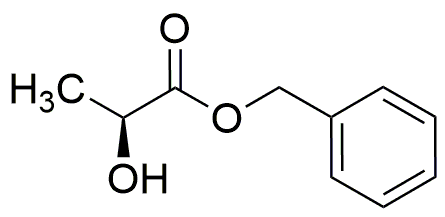Benzyl (S)-(-)-lactate is widely utilized in research focused on:
- Flavors and Fragrances: This compound is commonly used in the formulation of food flavors and perfumes due to its pleasant aroma, enhancing the sensory experience in products.
- Pharmaceuticals: It serves as an important intermediate in the synthesis of various pharmaceutical compounds, contributing to the development of effective medications.
- Cosmetics: The compound is incorporated into skincare and cosmetic products for its emollient properties, helping to improve texture and moisture retention.
- Chiral Auxiliaries: In asymmetric synthesis, it acts as a chiral auxiliary, facilitating the production of enantiomerically pure compounds, which is crucial in drug development.
- Research and Development: It is utilized in academic and industrial research settings to explore new chemical reactions and applications, driving innovation in various fields.
General Information
Properties
Safety and Regulations
Applications
Benzyl (S)-(-)-lactate is widely utilized in research focused on:
- Flavors and Fragrances: This compound is commonly used in the formulation of food flavors and perfumes due to its pleasant aroma, enhancing the sensory experience in products.
- Pharmaceuticals: It serves as an important intermediate in the synthesis of various pharmaceutical compounds, contributing to the development of effective medications.
- Cosmetics: The compound is incorporated into skincare and cosmetic products for its emollient properties, helping to improve texture and moisture retention.
- Chiral Auxiliaries: In asymmetric synthesis, it acts as a chiral auxiliary, facilitating the production of enantiomerically pure compounds, which is crucial in drug development.
- Research and Development: It is utilized in academic and industrial research settings to explore new chemical reactions and applications, driving innovation in various fields.
Documents
Safety Data Sheets (SDS)
The SDS provides comprehensive safety information on handling, storage, and disposal of the product.
Product Specification (PS)
The PS provides a comprehensive breakdown of the product’s properties, including chemical composition, physical state, purity, and storage requirements. It also details acceptable quality ranges and the product's intended applications.
Certificates of Analysis (COA)
Search for Certificates of Analysis (COA) by entering the products Lot Number. Lot and Batch Numbers can be found on a product’s label following the words ‘Lot’ or ‘Batch’.
*Catalog Number
*Lot Number
Certificates Of Origin (COO)
This COO confirms the country where the product was manufactured, and also details the materials and components used in it and whether it is derived from natural, synthetic, or other specific sources. This certificate may be required for customs, trade, and regulatory compliance.
*Catalog Number
*Lot Number
Safety Data Sheets (SDS)
The SDS provides comprehensive safety information on handling, storage, and disposal of the product.
DownloadProduct Specification (PS)
The PS provides a comprehensive breakdown of the product’s properties, including chemical composition, physical state, purity, and storage requirements. It also details acceptable quality ranges and the product's intended applications.
DownloadCertificates of Analysis (COA)
Search for Certificates of Analysis (COA) by entering the products Lot Number. Lot and Batch Numbers can be found on a product’s label following the words ‘Lot’ or ‘Batch’.
*Catalog Number
*Lot Number
Certificates Of Origin (COO)
This COO confirms the country where the product was manufactured, and also details the materials and components used in it and whether it is derived from natural, synthetic, or other specific sources. This certificate may be required for customs, trade, and regulatory compliance.


